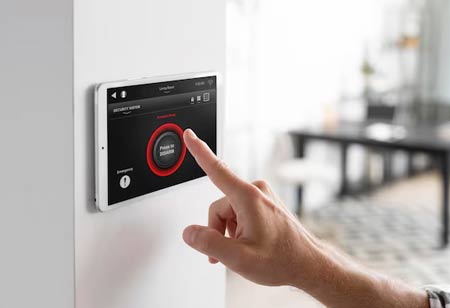THANK YOU FOR SUBSCRIBING
Be first to read the latest tech news, Industry Leader's Insights, and CIO interviews of medium and large enterprises exclusively from Gov CIO Outlook
THANK YOU FOR SUBSCRIBING

By
Government CIO Outlook | Friday, May 16, 2025
Stay ahead of the industry with exclusive feature stories on the top companies, expert insights and the latest news delivered straight to your inbox. Subscribe today.
Fremont, CA: In today's world of heightened uncertainty, it is essential to communicate quickly and effectively during emergencies. The primary goal of an emergency notification system is to deliver timely alerts along with guidance on ensuring safety, enabling organizations to manage crises with minimal effort. The benefits of such solutions include improved organizational preparedness and enhanced response capabilities, making them vital for industries and public safety agencies.
The critical benefit of emergency notification solutions is that they enable speedy dissemination. Whether the situation at hand is a natural disaster, security threat, or technical malfunction, speed could be all-important in case some outbreak has to be contained. With multi-channel systems now in place using text messages, e-mails, voice calls, and alerts from mobile apps, modern notification systems will ensure that messages are delivered more quickly and effectively. Such a multi-channel approach ensures people are reached wherever they happen to be, regardless of their preferred means, enhancing the possibility of timely and accurate information relaying.
The compelling capability of emergency notification solutions is to notify individuals based on specific criteria such as location, department, or role. This allows an organization to provide information only to those who most need it, which helps avoid information overload and ensures that relevant messages reach the recipient about their situation. For example, if some incidents only affected a particular area, alerts would only go to those within the impact region, reducing panic and confusion.
Emergency notification systems offer a significant advantage by integrating real-time data, ensuring the information is fresh and current. These systems allow for real-time monitoring and updates, enabling people to make informed decisions and take appropriate actions in fast-changing weather conditions. This allows for the most up-to-date news about the emergency.
Emergency notification solutions help with organizational coordination and response. While communication is centrally managed through alerts, coordination with emergency responders, employees, and other participants becomes easier. Such coordination is essential in active crisis management, wherein an organization can optimally use the resources to take effective action over evacuation procedures while constantly informing all parties.
It also allows tracking and analysis of notifications, which can provide valuable lessons for future preparedness. Most systems include analytics and reporting capabilities through which organizations can view effectiveness related to organizational communications. Response times, message delivery rates, and engagement with recipients are a few ways an organization can analyze and smoothen its strategies for emergency response.
After all, such a reliable emergency notification system's peace of mind is simply priceless. It gives a feeling of being safe and prepared, knowing very well that an extended system warns and guides through situations that could be replete with danger. This is important for maintaining morale and making all stakeholders feel supported and well-informed during such conditions.
I agree We use cookies on this website to enhance your user experience. By clicking any link on this page you are giving your consent for us to set cookies. More info

However, if you would like to share the information in this article, you may use the link below:
www.govciooutlookapac.com/news/improving-security-through-emergency-alert-systems-nid-2285.html



